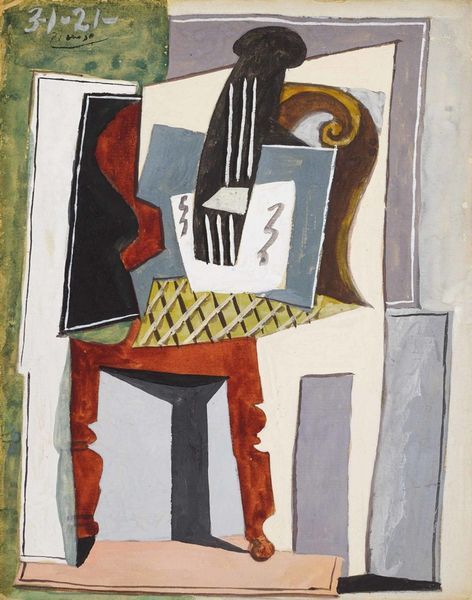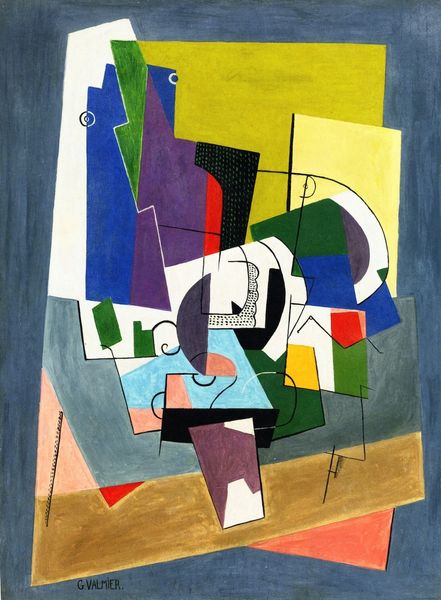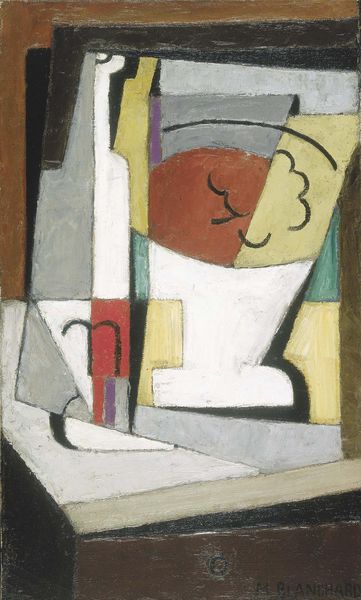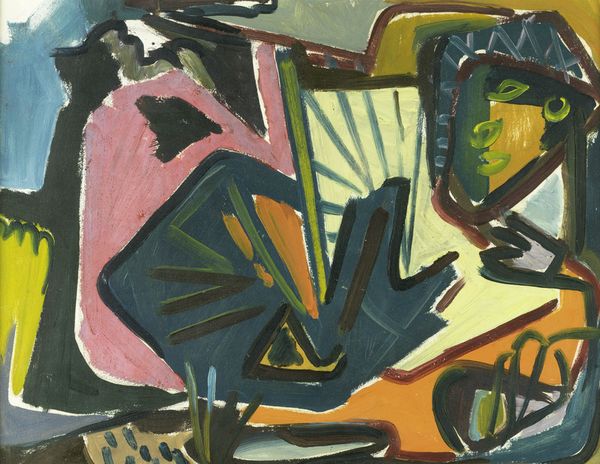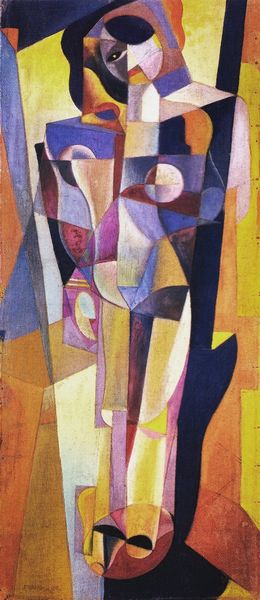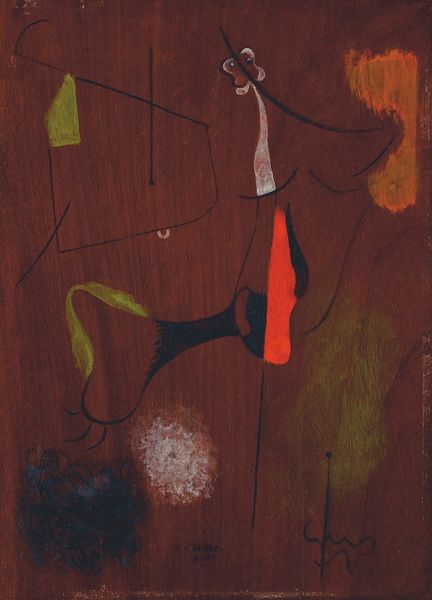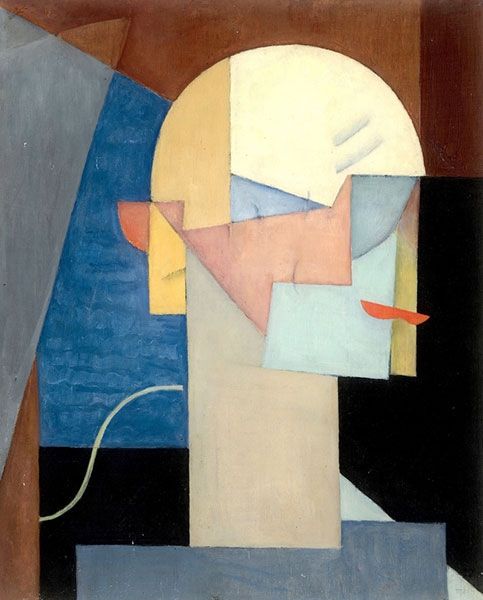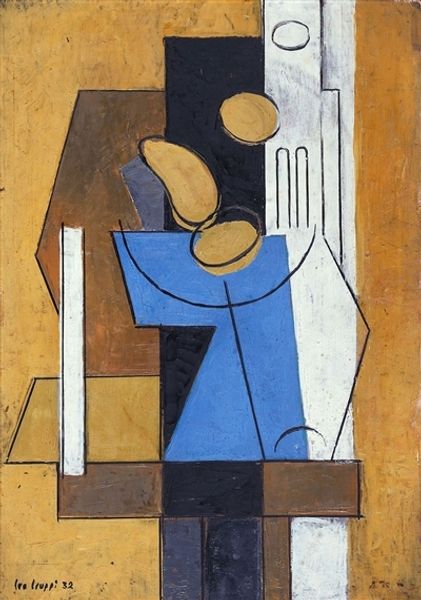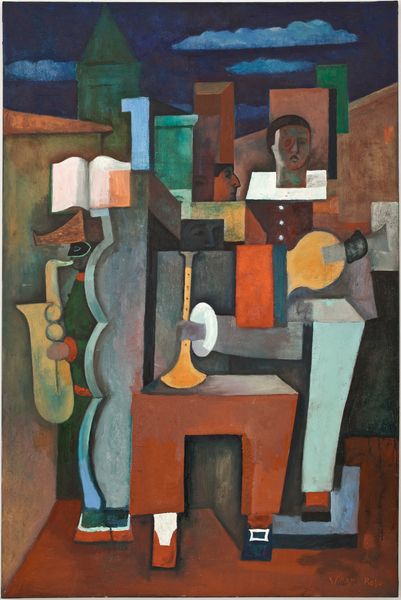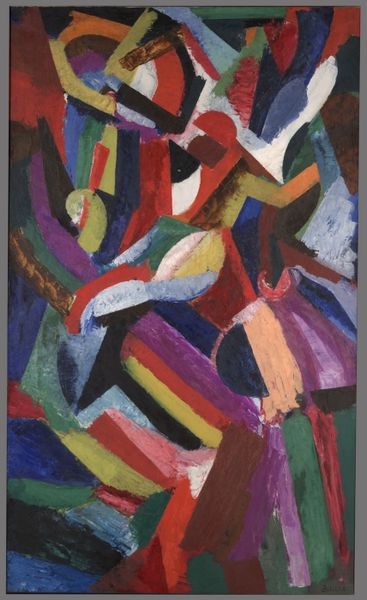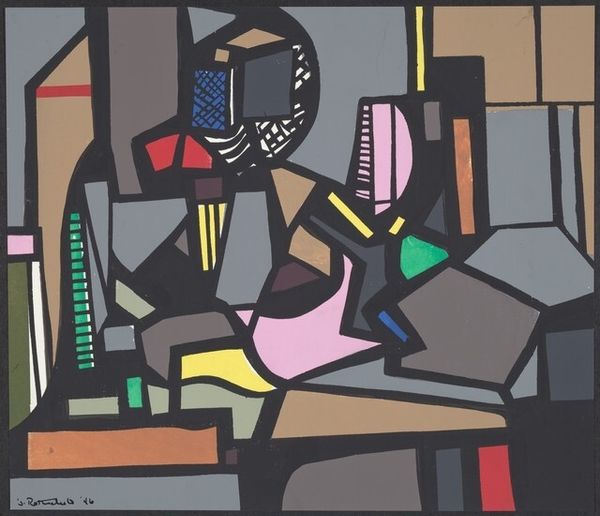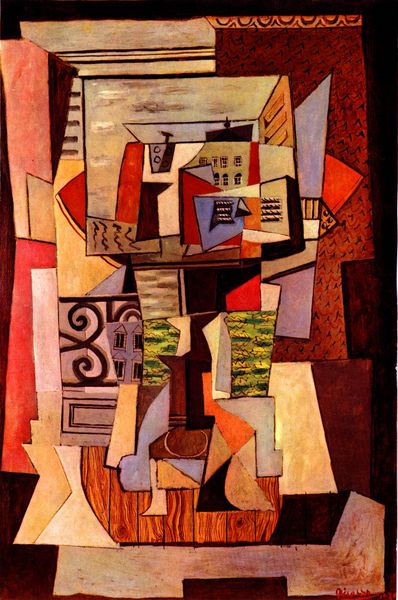
tempera, painting
#
portrait
#
tempera
#
painting
#
harlem-renaissance
#
figuration
#
geometric
#
abstraction
#
line
#
modernism
Copyright: William H. Johnson,Fair Use
Curator: This tempera painting on paper from 1941 is titled *Jitterbugs (IV)*, created by William H. Johnson. Its geometry practically vibrates! Editor: That's it exactly. At first glance, it’s almost chaotic, but there’s this incredible rhythm – that of music. It’s like the scene has been fragmented into shapes that capture the tempo, and the color...the exuberance is pure joy! Curator: Johnson’s work from this period reflected his experiences and observations of Harlem’s vibrant nightlife. This comes after his time in Europe, which gave his artistic language a very pronounced modernist lean, a clear divergence from the traditional approaches used by other Harlem Renaissance artists. Editor: Do you think his time abroad influenced his way of looking at color? Look at that use of contrasting shades – bold blues, yellows, reds – contained, mind you, within almost primitive outlines. Curator: Undoubtedly. After his travels, his work showcased simplification, more elemental figures and geometric forms. Think of his overall exploration of modernism alongside his conscious decision to address social issues prevalent back in the U.S. Editor: It almost has a childlike energy, so direct and playful, despite whatever complicated ideas might’ve gone into its making. And this almost naive quality lends it authenticity – like a genuine peek into the experience he wanted to capture. Curator: Indeed. And look closely at the background itself, which is so very pale, it lets all those central shapes pulsate even more vibrantly. The surface almost seems alive because of it. Editor: Absolutely. It makes me think of a photograph where you've slowed the shutter speed, catching movement as colorful blurs that register as afterimages long after the music stops. This painting preserves the energy of the dance so poetically. Curator: It's interesting how Johnson takes something familiar and makes it wonderfully strange, prompting us to re-see both the joy and social space he so deftly captures here. Editor: This glimpse offers us much more, wouldn’t you say, than just what’s shown. It reminds us, at least, that real feeling resides as much within form as anything else.
Comments
No comments
Be the first to comment and join the conversation on the ultimate creative platform.
